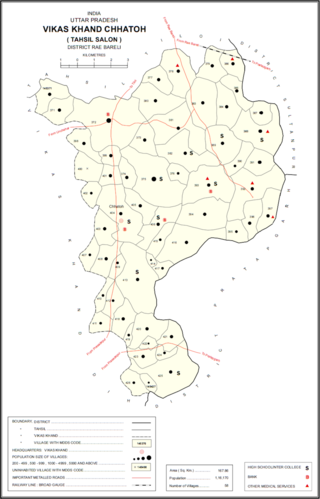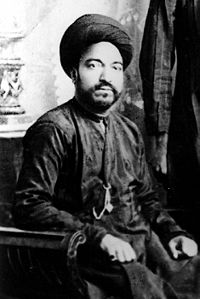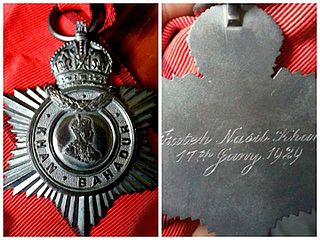
Aligarh is a city in the state of Uttar Pradesh in India. It is the administrative headquarters of Aligarh district, and lies 342 kilometres (213 mi) northwest of state capital Lucknow and approximately 130 kilometres (81 mi) southeast of the capital, New Delhi. The cities and districts which adjoin Aligarh are: Gautam Buddha Nagar, Bulandshahr, Sambhal, Badaun, Kasganj, Hathras, Etah and Mathura, as well as Palwal district of Haryana. As of 2011, Aligarh is the 53rd most populous city in India.

The United Provinces of Agra and Oudh was a province of India under the British Raj, which existed from 22 March 1902 to 1937; the official name was shortened by the Government of India Act 1935 to United Provinces (UP), by which the province had been commonly known, and by which name it was also a province of independent India until 1950.
Syed Ibne Hasan Nunahrvi(نادرة الزمن مولانا سيد ابن حسن نونهروى)(1899-1980), was an Indian Shia Muslim cleric, orator and scholar.

Allahabad High Court, officially known as High Court of Judicature at Allahabad, is the high court based in the city of Prayagraj, formerly known as Allahabad, that has jurisdiction over the Indian state of Uttar Pradesh. It was established on 17 March 1866, making it one of the oldest high courts to be established in India.
The Sultan ul Madaris Urdu: سُلطان المدارس; is a Shia Islamic Madrasa for higher religious education in Lucknow, India. Major course of studies include Jurisprudence, Theology and Islamic Literature.

The University of Lucknow is a public state university based in Lucknow, Uttar Pradesh. LU's main campus is located at Badshah Bagh, University Road area of the city with a second campus at Jankipuram. It is the largest state university of Uttar Pradesh. It is also the only public university of the state to offer both on-campus and online programmes of study.
The state of Uttar Pradesh had a small tradition of learning, although it had remained mostly confined to the elite class and the religious establishment.

Harchandpur is a village and corresponding community development block in Raebareli district, Uttar Pradesh, India. It is located on the Baiti river, which is a tributary of the Sai, and it is northeast from the district headquarters on the road to Lucknow. Particularly since the coming of the railway in the 1800s, Harchandpur serves as one of the main commercial centres for the surrounding region; it is also a major exporter of local goods. As of 2011, its population is 4,348 people, in 833 households.
Syed Mohammad Waris Hasan Naqvi Nasirabadi was a Shia muslim cleric from Lucknow, Uttar Pradesh, India.
Syed Ali Zaheer (1896-1983) سیّد علّی ظہیر was an Indian politician and law minister in the first cabinet formed by Prime Minister Jawaharlal Nehru.

Waris Ali Shah (1817–1905) was a Sufi saint from Dewa, Barabanki, India, and the founder of the Warsi Sufi order. He traveled to many places specially Europe and the west and admitted people to his spiritual order. He belongs to the 26th generation of Hazrat Imam Hussain رضی اللہ عنہ His shrine is at Dewa, India.

Justice Syed Mahmood was Puisne Judge of the High Court, in the North-Western Provinces of British India from 1887 to 1893, after having served in the High Court in a temporary capacity as officiating judge on four previous periods since 1882.

Nasirabad is a Nagar panchayat and a Gram Sabha in Chhatoh Block, Raebareli district in the state of Uttar Pradesh, India. It was declared a Nagar Panchayat in 2017. Located southeast of Jais on the road to Salon, Nasirabad is an old town partly built on an elevated area that covers the ruins of an ancient fort. It is one of the main Muslim centres in the district. Muslims make up about half the town's population, and the Shia and Sunni communities are both prominent. As of 2011, Nasirabad's population is 13,648, in 2,243 households. It is located 37 km from Raebareli the district headquarters. It is the headquarters of a nyaya panchayat that also includes 6 other villages.
Gazi Saiyyed Salar Sahu or Saiyed Salar Dawood or Sahu Bin Ataullah Alavi or Salar Sahu was a gazi and a commander in the army of Sultan Mahmud Ghaznavi who came to the Indian subcontinent in the early 11th century.

Syed Ali Nasir Saeed Abaqati Musavi, known as Roohul Millat and Agha Roohi, is a Shia cleric from Lucknow, India.
Jamiul Uloom Jawadia, also known as Jawadia Arabic College, is a Deeni Madarasa of Shia Muslims in Banaras (Varanasi) India. Major course of studies include Jurisprudence, Theology and Islamic Literature.
The Abaqati family is a sub-branch of the Jarwal-Kintoor branch of Nishapuri Kazmi-Musavi Sayeds who trace their lineage to the Islamic prophet Muhammad through the eldest son of the great-grandson of Musa al-Kadhim, he was given a jagir in Jarwal-Kintoor by Sultan Muhammad Tughluq, his other two brothers were given jagirs in Budgam, Kashmir and Sylhet, Bengal.

Syed Sibte Hasan Naqvi was a Shia cleric from Lucknow, Uttar Pradesh, India. He was known by the title of Khatib-E-Azam.

Khan Bahadur – a compound of Khan "Leader" and Bahadur "Brave" – was a honorary title in British India conferred on Indian subjects who were adherents of Islam or Zoroastrianism. The equivalent title for Hindus, Buddhists and Indian Christians was Rao Bahadur/Rai Bahadur and Sardar Bahadur for Sikhs. The title of Khan Bahadur was one degree higher than the title of Khan Sahib.











